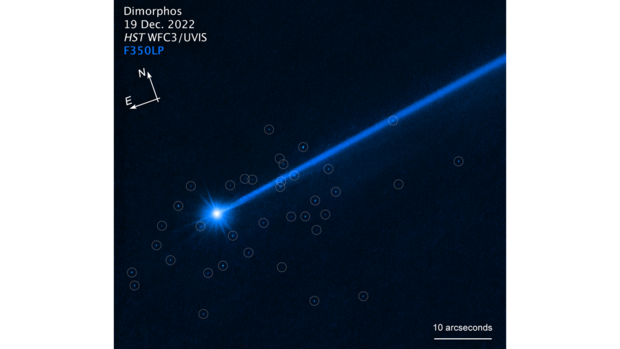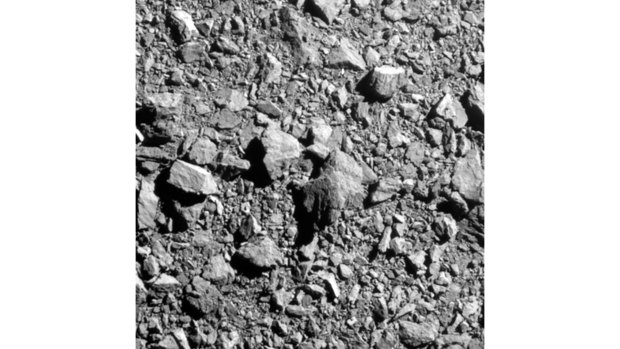"Surprise" discovery: 37 swarming boulders spotted near asteroid hit by NASA spacecraft last year
A recent experiment gave NASA scientists a closer look at how attempting to redirect or destroy asteroids approaching Earth could lead to even more projectiles.
Asteroids "present a real collision hazard to Earth," according to NASA, which noted in a recent press release that an asteroid measuring several miles across hit the planet billions of years ago and caused a mass extinction event that wiped out dinosaurs and other forms of life. To counteract this threat, scientists have studied how to knock an Earth-approaching asteroid off-course.
That led to the 2022 DART, or Double Asteroid Redirection Test. Conducted on Sept. 26, 2022, the test smashed a half-ton spacecraft into an asteroid at about 14,000 miles per hour, and the results were monitored with the Hubble Space Telescope, a large telescope in outer space that orbits around Earth and takes sharp images of items in outer space. The trajectory of the asteroid's orbit around the larger asteroid it was circling slightly changed as a result of the test.
Scientists were surprised to see that several dozen boulders lifted off the asteroid after it was hit, which NASA said in a news release "might mean that smacking an Earth-approaching asteroid might result in a cluster of threatening boulders heading in our direction."
Using the Hubble telescope, scientists found that the 37 boulders flung from the asteroid ranged in size from just 3 feet across to 22 feet across. The boulders are not debris from the asteroid itself, but were likely already scattered across the asteroid's surface, according to photos taken by the spacecraft just seconds before the collision. The boulders have about the same mass as 0.1% of the asteroid, and are moving away from the asteroid at about a half-mile per hour.
David Jewitt, a planetary scientist at the University of California at Los Angeles who has used the Hubble telescope to track changes in the asteroid before and after the DART test, said that the boulders are "some of the faintest things ever imaged inside our solar system."
"This is a spectacular observation – much better than I expected. We see a cloud of boulders carrying mass and energy away from the impact target. The numbers, sizes, and shapes of the boulders are consistent with them having been knocked off the surface of Dimorphos by the impact," said Jewitt in NASA's news release. "This tells us for the first time what happens when you hit an asteroid and see material coming out up to the largest sizes."
Jewitt said the impact likely shook off 2% of the boulders on the asteroid's surface. More information will be collected by the European Space Agency's Hera spacecraft, which will arrive at the asteroid in late 2026 and perform a detailed post-impact study of the area. It's expected that the boulder cloud will still be dispersing when the craft arrives, Jewitt said.
The boulders are "like a very slowly expanding swarm of bees that eventually will spread along the (asteroid's) orbit around the Sun," Jewitt said.
Scientists are also eager to see exactly how the boulders were sent off from the asteroid's surface: They may be part of a plume that was photographed by the Hubble and other observatories, or a seismic wave from the DART spacecraft's impact could have rattled through the asteroid and shaken the surface rubble loose. Observations will continue to try to determine what happened, and to track the path of the boulders.
"If we follow the boulders in future Hubble observations, then we may have enough data to pin down the boulders' precise trajectories. And then we'll see in which directions they were launched from the surface," said Jewitt.





